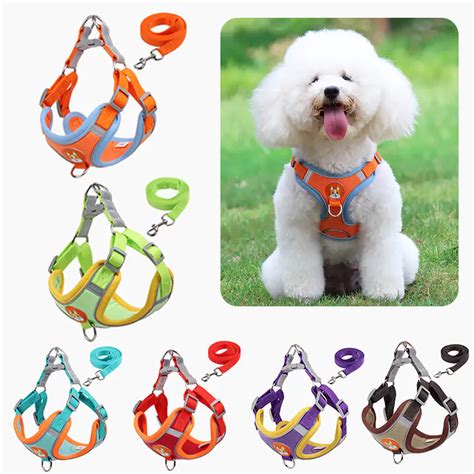Introduction
Dogs are a beloved part of many families, and the bond between a dog and its owner is unbreakable. As responsible dog owners, it is our duty to provide our furry companions with the best possible care, including ensuring their safety when out and about. A dog leash is an essential tool for controlling your dog and keeping them safe in a variety of situations. With the plethora of options available on the market, choosing the right dog leash can be a daunting task. To help you make an informed decision, this comprehensive guide will delve into the factors to consider when selecting the best dog leash for your furry friend.

Types of Dog Leashes: Understanding the Options
Dog leashes come in a variety of types, each designed for specific purposes and dog breeds. Understanding the different types available will help you narrow down your search and select the most suitable leash for your dog.
1. Standard Leash: The most common type of dog leash, standard leashes are made of nylon or leather and come in a range of lengths. They are suitable for most dogs and come with a variety of features, such as padded handles, reflective strips, and traffic handles.
2. Retractable Leash: Retractable leashes offer more freedom and flexibility for dogs while on walks. They allow the dog to roam freely within a certain distance, while still maintaining control. However, retractable leashes should be used cautiously, as they can pose a safety hazard if not handled properly.
3. Hands-Free Leash: Hands-free leashes provide dog owners with greater freedom of movement while walking their dogs. They are typically worn around the waist or shoulder and allow the dog to walk beside the owner without the need to hold a leash. Hands-free leashes are ideal for runners or those who enjoy hiking with their dogs.
4. Multi-Dog Leash: Multi-dog leashes are designed for owners with multiple dogs. They allow you to walk several dogs simultaneously, making it easier to control and manage them. Multi-dog leashes come in a range of configurations, including parallel or adjustable designs.
Choosing the Right Leash: Factors to Consider
Selecting the right dog leash involves considering several important factors that will impact the comfort, safety, and control of your dog. Here are some key aspects to keep in mind:
1. Breed and Size of Your Dog: The breed and size of your dog will determine the type of leash you need. Smaller dogs may be suitable for a standard leash, while larger dogs may require a more durable leash or harness.
2. Environment and Purpose: Consider the environment where you will be using the leash and the purpose for which you need it. If you are walking your dog in a busy area, a shorter leash may be more appropriate than a long leash. If you are hiking or exploring off-leash areas, a retractable leash may provide more freedom and flexibility.
3. Comfort and Handling: The comfort and handling of the leash are essential for both you and your dog. Choose a leash with a padded handle that is comfortable to hold and provides good grip. Adjustable leashes allow you to customize the length to suit different situations.
4. Safety Features: Safety should be a top priority when choosing a dog leash. Reflective strips on the leash enhance visibility during night walks, while a quick-release mechanism allows you to quickly unclip your dog in an emergency.
5. Durability and Material: The durability and material of the leash should match the strength and activity level of your dog. Nylon leashes are lightweight and durable, while leather leashes are more stylish but may require more care.
Tips and Tricks for Using Dog Leashes Effectively
1. Introduce the Leash Gradually: Introduce your dog to the leash gradually to avoid creating negative associations. Start by attaching the leash inside the house, rewarding your dog for good behavior. Gradually increase the duration and distance of walks as your dog becomes more comfortable.
2. Use a Variety of Leashes: Different situations call for different types of leashes. Keep a standard leash for everyday walks, a retractable leash for off-leash areas, and a hands-free leash for hiking or running.
3. Maintain Proper Leash Tension: Keep the leash loose when your dog is walking calmly beside you. Tightening the leash should only be used as a gentle correction for pulling or unwanted behavior.
Case Study: Exploring the Benefits of Different Leash Types
Scenario: A dog owner with a small terrier named Max is seeking a leash for daily walks in the neighborhood. They prioritize control, comfort, and visibility.
Analysis: For Max, a standard leash with a comfortable padded handle and reflective strips would be a suitable option. The shorter length of the leash provides greater control, while the padded handle ensures comfort for the owner. The reflective strips enhance visibility during evening walks, ensuring the safety of both Max and his owner.
Conclusion
Choosing the best dog leash for your furry friend is a crucial aspect of responsible dog ownership. By considering the type, factors, and tips discussed in this guide, you can make an informed decision that will ensure the comfort, safety, and control of your loyal companion. Remember, the perfect dog leash is the one that meets the specific needs of your dog and your lifestyle.





















